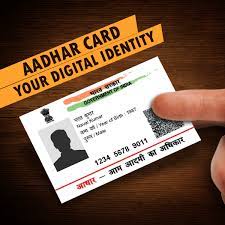In the digital age, Aadhaar has become an integral part of every Indian citizen’s life. This 12-digit unique identity number, issued by the government, serves as a key to access a wide range of services. But did you know that there are different types of Aadhaar cards? In this report, we delve into the various categories of UID cards and their validity, shedding light on the nuances that every Indian should be aware of.
Types of Aadhaar Cards
The first letter of your name determines the type of Aadhaar card you receive. This subtle distinction can have a significant impact on the services you can avail. For instance, Aadhaar cards issued to residents of India have ‘A’ as the first letter, while foreign nationals receive cards with ‘F’ as the starting letter.
Validity of Aadhaar Cards
Understanding the Different Types
Aadhaar for Residents (A-Series)
Aadhaar cards issued with ‘A’ as the first letter cater primarily to Indian residents. They are valid for life, making them a lifelong identity proof. This type of card is the most common and can be used for various purposes, including opening bank accounts, getting a SIM card, and more.
Aadhaar for Foreign Nationals (F-Series)
Foreign nationals residing in India receive Aadhaar cards with ‘F’ as the first letter. These cards are also valid for life, allowing non-Indians to access essential services within the country with ease.
Aadhaar for Minors (M-Series)
Children below the age of 5 receive Aadhaar cards under the ‘M’ category. These cards are blue in color and require mandatory biometric updates when the child turns 5 and 15 years old. The validity of M-series Aadhaar cards extends until the child reaches adulthood.
Aadhaar for Residents with No Proof (RJ-Series)
For residents who lack valid proof of identity and address, ‘RJ’ series Aadhaar cards are issued. These cards have limited validity and are subject to verification and updates.
Equally Valid, Differently Applied
While the various Aadhaar cards serve different purposes and have distinct validity periods, it’s essential to note that all of them are equally valid for the intended duration. However, the application and usage may vary based on the type of card you hold.
Ensuring Card Relevance
To maintain the relevance of your Aadhaar card, it’s crucial to keep your details updated. Address changes, biometric updates, and other modifications can be done at Aadhaar enrollment centers. This ensures that your card remains a valid proof of identity and address throughout its validity period.
In Conclusion
Aadhaar, in its various forms, is a vital document that simplifies the lives of millions of Indians. Understanding the differences in UID cards and their validity is essential for hassle-free access to government services and other privileges. Remember, while the first letter may differentiate the cards, their significance remains consistent – a key to a secure and convenient life in the digital era.
























